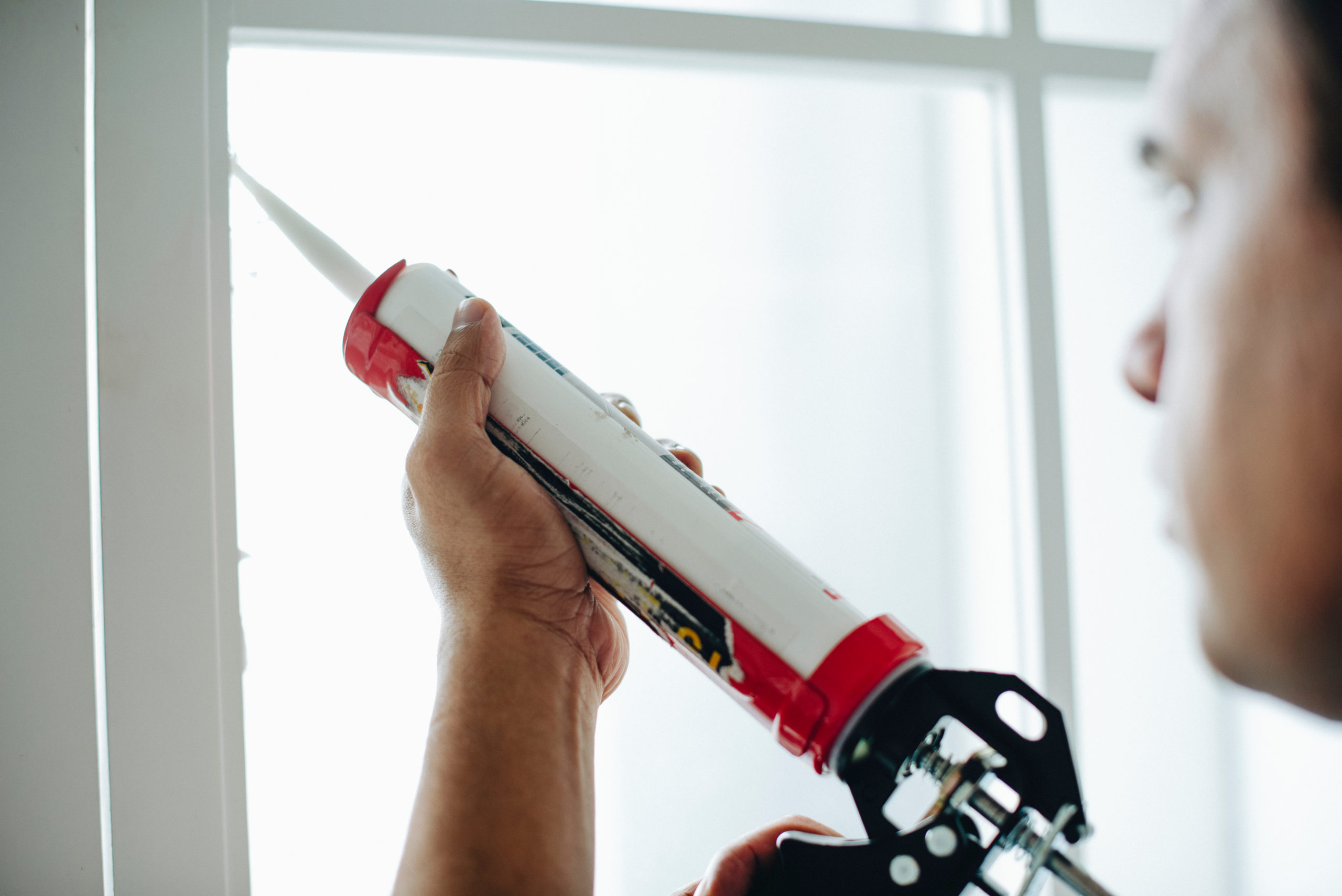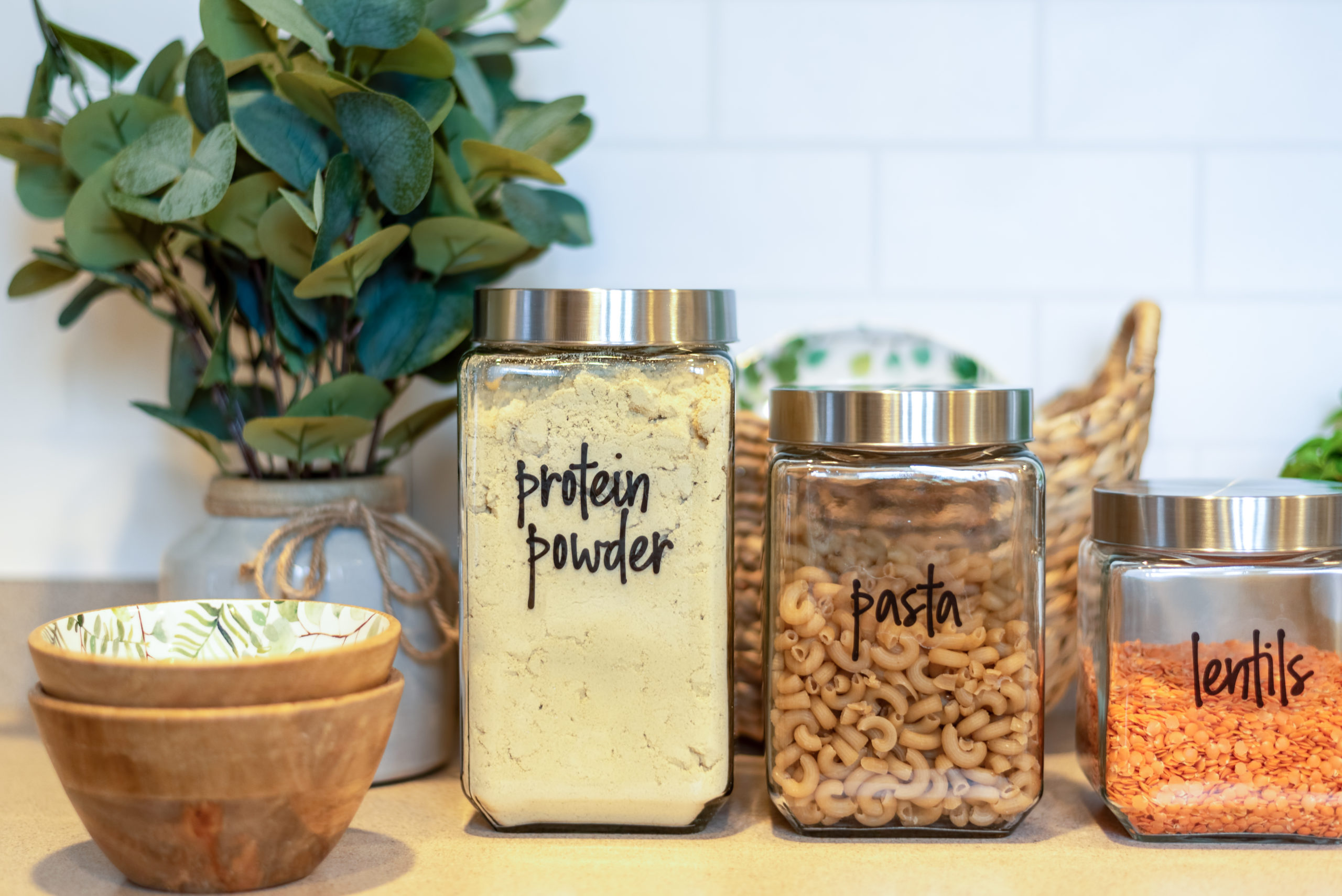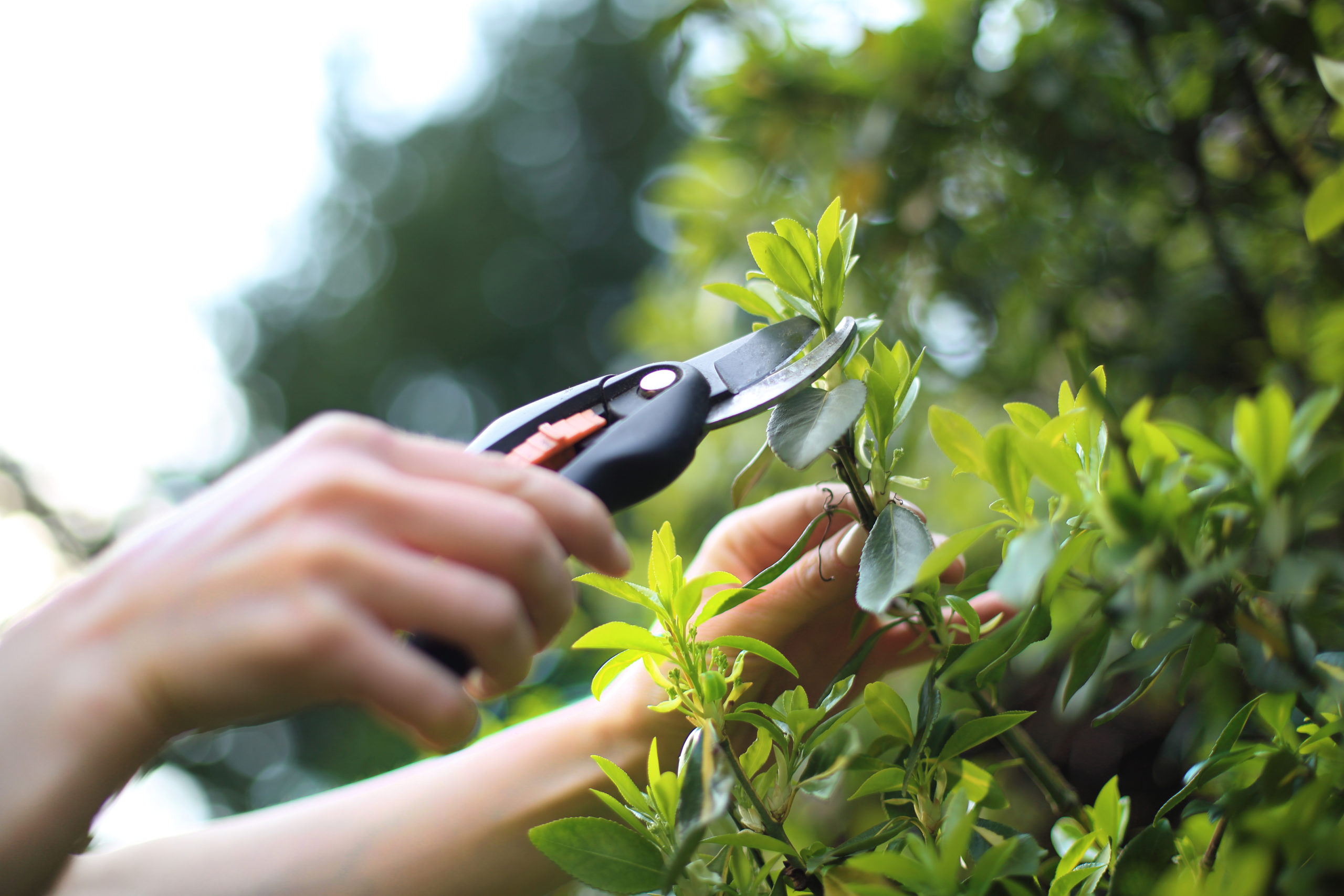The Top 5 Ways to Prevent Pests
The Top 5 Ways to Prevent Pests
If you were to research ways to prevent pests from invading your home or business, you would be flooded with too many results to count. Maybe you already have searched this exact topic, and had to pick and choose your favorite options just to narrow down the potential fixes for a pest invasion. Some ideas are certainly more effective than others, but there are always the tried-and-true methods that seem to consistently prevent pests, for the most part. No DIY task is effective forever, as every spring and summer brings about a new generation of pests that try to invade any house that they can.
But, above them all, there are five methods that we consistently recommend as everyday ways to prevent pests from making your home their own. You may already do one or all of these, but these tasks are so important to the overall pest prevention and cleanliness of a home that we want to spend time exploring the reasons why they are crucial.
Clean All Crumbs and Spills

Specific Pest Preventions: ants, roaches, mice, rats, gnats, pantry pests
There is a reason we give this advice in many blogs about various pests. One of the top reasons that pests invade is because they detect some kind of food in the area. In their search for the three necessities – food, water, and shelter – pests will stop at nothing to get what they need for themselves and their colony or family. This is where the humble crumb comes into play; any kind of crumb, spill, or food residue is a major food source for tiny pests. Their odor receptors are generally stronger than ours, hence why insects and rodents can find the crumbs that we missed during our kitchen cleaning.
Since most food residue is in the kitchen area, this is where we recommend focusing your cleaning methods. You don’t have to do a daily deep cleaning where you scrub each surface, but doing little tasks everyday or every other day will greatly help in keeping your kitchen free of pests:
- Clean the counters every day. You can use whichever cleaning products that you prefer for this, but we suggest using some kind of spray or wipe that eliminates bacteria and residue left from food spills. This will not only get the obvious food debris from snacks and meals, it will also eliminate the leftover smells that pests can detect.
- Wipe the stovetop and microwave. Whether you have a gas or electric cooktop, it still needs to be cleaned after cooking. Crumbs, pieces of pasta, rice, sauce stains, and various food spills always seem to make their way near the burners, no matter how careful you are. This one is similar to cleaning the counters in that you can use the cleaner you prefer. Some people just use water and a clean washrag for these areas to prevent cleaners from leaving toxic fumes when these appliances are being used. Just make sure that both the stove and microwave are completely cool before you clean them!
- Mop, sweep, and/or vacuum the floors. Even if you and your family are careful not to spill a drop of the delicious cooking, there are still tiny crumbs and seasoning specks that can inadvertently end up on the floor. This task can be as frequent as you want; some people like to do a quick sweep every day, while others prefer to do a more involved cleaning once a week. If you happen to have a pest problem and vacuum up many insects, empty out the vacuum when you are done. You may also want to clean the inside of the vacuum canister if this is the case, as some insects leave stains and liquid behind.
Seal All Cracks and Holes

Specific Pest Preventions: ants, roaches, mice, rats, earwigs, stink bugs, centipedes
This tip is not only recommended by our team, but it is also often part of our services as our technicians inspect the perimeter for any entry points. Many pests are small enough to fit in minuscule gaps and spaces that cannot be completely fixed, but the larger gaps are the main problem here. Any kind of hole, crack, or crevice in the physical house or building can be easily utilized as a doorway for pests. Even larger pests, like rats and mice, can fit through tiny spaces. There have been cases where these rodents squeeze through cracks the width of a pencil, just to get inside! Any home can develop a crack or small space over time, but older houses are more at risk for having these gaps naturally develop with constant adverse weather. This method is thankfully not an everyday task, but it definitely helps to get it done as soon as you find any random gaps:
- Inspect the exterior somewhat often, especially when the seasons change or after a major storm. Check the foundation, siding, and exterior walls around doors and windows for any new cracks or holes. Also, inspect the areas around wires and utilities for any hidden holes or cracks that could be utilized by pests. It can also be helpful to get the roof inspected once in a while, or to do it yourself if you’re not afraid of heights, to make sure there aren’t any damaged areas that could cause larger problems in the future.
- Fill in any cracks with caulk. This can be purchased from any hardware store. Some experts recommend not using the foaming caulk, as it can still leave gaps just large enough for tiny pests to slip through. Make sure to read the instructions to make sure that it will actually work at keeping pests out of your home, as well as fill in gaps around windows and doors that could potentially let in outside conditions.
- Use copper mesh or steel wool to seal holes. Holes in the house require more than caulk, which is why either of these materials are necessary. Use just enough to fill the hole, as too much will leave spaces for pests and not be uniform with the house. Use a screwdriver or similar tool to stuff the material into the hole, then seal around the hole with caulk.
Store Food in Airtight Containers

Specific Pest Preventions: ants, roaches, weevils, pantry pests, mice, rats, flies, gnats
If we had to pick one room of the house to be the most popular place for a pest infestation, the kitchen is definitely one of the top choices. There is something for every pest in the kitchen: food, moisture, shelter, nesting materials, and isolated corners in cabinets. This is why it is essential to keep all opened food in airtight, completely sealed containers. If idle crumbs can draw pests in, opened bags of snacks or cereal will definitely attract some thieving critters. Even bags and boxes that aren’t open yet could be eventually invaded, as cardboard is a favorite food source of cellulose-loving pests. If you like to keep a stocked pantry (and who doesn’t?), it is worth investing in some sealed containers:
- Use lidded containers to hold dry foods. The specific types are completely up to you and your aesthetic preferences. Some of the most common ones are the pop-top containers, canning jars, lidded plastic tubs, and glassware with snap-on lids. Whether you stick to one type or mix-and-match, make sure that they have a tight seal without gaps. This is key in keeping pests out of your food.
- Utilize the fridge and freezer more. While we typically only think of using these spaces for the foods and drinks that clearly need to stay cold, these appliances can also be used for other items. This is especially useful if you don’t want to buy a lot of new containers for the pantry, which is understandable. Opened breads, pastas, baked goods, rice, and tortillas are all good options for food to keep in the fridge or freezer. As a bonus, they all heat up very nicely!
- Keep pet food contained as well. Just because they eat the same thing every day doesn’t mean our furry friends can’t have their food protected! The specific way that you store their food depends on the space you have and the size of the packages. If you have a huge bag of dog or cat food, keep it in a garbage can-like container with a lid. You can also store the bags of treats in here. Canned food should be okay to be left in a cabinet or in the garage, but make sure there aren’t any holes in them. Rodents are notorious for invading pet food, so these containers will keep your pets’ food free of any unpleasant tastes or visitors.
Keep Plants Trimmed Back From the House

Specific Pest Preventions: ants, rats, mice, beetles, crickets, spiders, bees, wasps
Maintaining the landscaping and keeping all the greenery trimmed is a good idea in general, just to keep them from becoming potential pest homes or taking over your yard. But we specifically mean to keep it all trimmed back from the actual house for a reason. Plants have insects and small critters on them, which isn’t a new concept, but they can easily use these plants as a freeway right up to your house if it is touching. This is also the case with tree branches, as pests can travel from the branch to the exterior or even a vent, if the branch is close enough. Yard work is not an everyday chore (unless you have an impressive amount of greenery), but it is worth spending time on the maintenance of the plants.
- Mow the lawn regularly. Depending on the size of your lawn(s), it can be a time-intensive chore to cut the grass. But it is well worth it in the world of pests. Many of the ground-dwelling insects live within grass, especially when it’s taller, so mowing the lawn will keep the amount of lawn pests down as well.
- Clean the gutters. This is definitely a larger chore, but the good news is that it doesn’t need to be done super often. Before the rainy season starts, make sure to clear all gutters of any leaves and debris. A clogged gutter can house pests that love moisture, and it isn’t good for the exterior of the house anyway. It also helps to clear the gutters in spring, when the trees begin growing leaves again and pests start growing their populations.
- Push soil back from any doorways. This may sound like a weird one, but hear us out. Some pests also like to live in soil, specifically around plants, and many of them burrow out tunnels to expand their homes. If the soil and any flowers or plants are right outside a sliding door or the front door, push the soil away from the house as much as possible. It also helps to have the soil sloping downward and away, as this prevents many pests from cresting the hill straight into your home.
Keep Trash Regulated

Specific Pest Preventions: ants, roaches, rats, mice, flies, fruit flies, wasps
This is applicable to both the interior trash cans and the large exterior ones. Pests love our trash – one person’s trash is a pest’s treasure! – because of the numerous resources they find in there. Food scraps, cardboard, candy wrappers, soda cans, and overripe produce all appeal to pests of various species. If the cans are left open and overflowing inside or outside, it is a clear invitation to pests to infest these containers. Trash is dirty and bacterial enough without the addition of tiny critters crawling all over the heap.
- Keep plant litter contained. Even though it seems strange to say it, keeping all weeds and leaf litter collected during yard work in a designated container greatly helps prevent pests. They can’t get into a can that has a good lid, which means they cannot get into the discarded greenery. Any garden pests that were on these pieces will also be contained in the can, which means they can’t invade your healthy plants.
- Keep indoor trash bins concealed. The specifics of how this looks depends on the type of garbage bins you have. If they have a lid, then just make sure the lid is always on it to keep pests out. If they don’t have a lid, try keeping them under the sink or in a large cabinet. Even though it is not a perfect seal, the fact that it is kept in a cabinet will already deter pests that are too big to enter.
- Take out the trash often. This is one of those chores that isn’t fun at all despite its easiness. When the bag is full but before it is overflowing, take it out to the big trash can or dumpster. Keeping up with the indoor trash bins prevents pests from detecting any hidden treasures that can be found in there. Also, make sure the areas around the outdoor trash cans are clear of garbage. Pests can come for the random pieces and stay for the big cans, which would be quite the unpleasant surprise for the next person to open the lid!
Bonus: Contact Pest Control Services
This is not one of the five tips, but it is definitely an important one to utilize. Pest control services combined with these five methods is a great way to make your home as pest-free as possible. Pest control is not just for when there is an active infestation, though that is definitely a prime time for services. Technicians provide inspections and treatments for prevention, suppression, and eradication, depending on the situation. Our team is always happy to treat your pest issues and answer any questions you may have, as complete client satisfaction through our services is our top priority! Contact us for more information on our eco-friendly services and how we can keep your home free of pests, especially when paired with these preventative methods.
Citations
Glover, E. & Pelchen, L. (2022, May 26). What is the best way to prevent a pest infestation?. Forbes Home. Available at https://www.forbes.com/home-improvement/pest-control/how-to-prevent-pests/ (Accessed on September 7, 2022).
Good Housekeeping Institute Team. (2021, August 12). 10 tips for pest prevention. Good Housekeeping. Available at https://www.goodhousekeeping.com/uk/house-and-home/household-advice/a665181/10-top-tips-for-pest-prevention/ (Accessed on September 7, 2022).
Jo Lupo, L. (2022, January 31). 10 tips to become your home’s pest defender. The Spruce. Available at https://www.thespruce.com/easy-pest-control-tips-2656521 (Accessed on September 7, 2022).
Stanley, J. (2021, August 25). 25 tips for controlling pests in and around your home. Family Handyman. Available at https://www.familyhandyman.com/list/26-tips-for-controlling-pests-in-and-around-your-home/ (Accessed on September 7, 2022).
8 Creative Ways to Have a Pest-Free Fourth of July
8 Creative Ways to Have a Pest-Free Fourth of July 8 Creative Ways to Have a Pest-Free Fourth of July Summary: The Fourth [...]
A Simple Guide to Preventing Stinging Pests
A Simple Guide to Preventing Stinging Pests A Simple Guide to Preventing Stinging Pests Summary: Stinging insects are more active in warm weather, [...]
These 10 Natural Mosquito Repellents Can Actually Help
These 10 Natural Mosquito Repellents Can Actually Help These 10 Natural Mosquito Repellents Can Actually Help Summary: Natural mosquito repellents are easier to [...]
How to Get Rid of Carpet Beetles
How to Get Rid of Carpet Beetles How to Get Rid of Carpet Beetles Summary: Carpet beetles are sneaky pests that don’t usually [...]
How Do Roaches Affect Asthma and Allergies?
How Do Roaches Affect Asthma and Allergies? How Do Roaches Affect Asthma and Allergies? Summary: It’s no secret that pests impact human health, [...]
These 5 Carnivorous Pests Might Surprise You!
These 5 Carnivorous Pests Might Surprise You! These 5 Carnivorous Pests Might Surprise You! Summary: There are many eco-friendly ways to prevent pests, [...]

